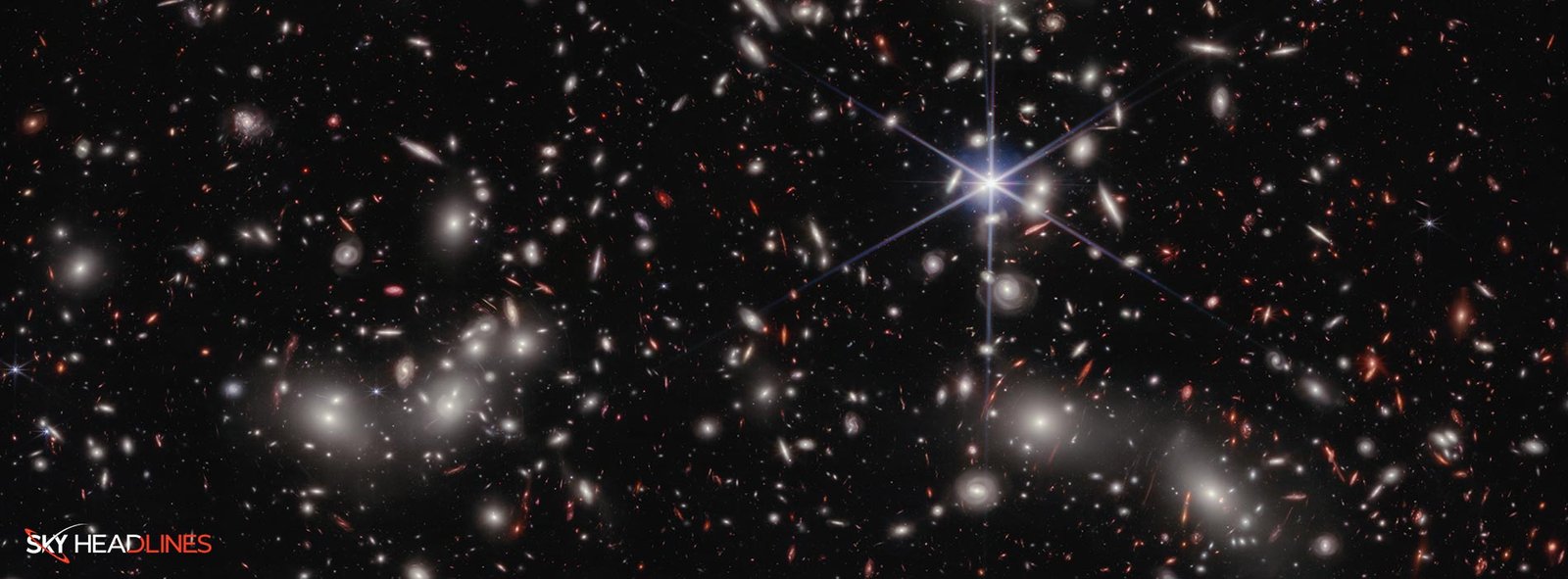NASA’s James Webb Space Telescope has released its latest deep field image, which shows previously unseen details in a region of space known as Pandora’s Cluster (Abell 2744). Three huge galaxies join to form a giant cluster, according to Webb. Due to the cluster’s gravitational lens, scientists can identify even more distant galaxies from the early universe by using it as a magnifying glass.
Previous NASA’s Hubble Space Telescope research only focused on Pandora’s center core. With the powerful infrared instruments aboard Webb and a wide mosaic view of the region’s many sites of lensing, astronomers hoped to strike a balance between breadth and depth that would lead to new insights into the nature of the universe and the development of galaxies.
Rachel Bezanson is an astronomer at the University of Pittsburgh in Pennsylvania. Moreover, he is the co-principal investigator on the “UNCOVER” (Ultradeep NIRSpec and NIRCam ObserVations before the Epoch of Reionization) program to study the region. “The ancient myth of Pandora is about human curiosity and discoveries that delineate the past from the future, which I think is a fitting connection to the new realms of the universe Webb is opening up, including this deep-field image of Pandora’s Cluster,”
Combining JSWT images!
The recently discovered view of Pandora’s Cluster is a panorama of four Webb photographs, displaying over 50,000 sources of near-infrared light. “When the images of Pandora’s Cluster first came in from Webb, we were honestly a little star-struck,”. Bezanson says. “There was so much detail in the foreground cluster and so many distant lensed galaxies, I found myself getting lost in the image. Webb exceeded our expectations.”
In addition to magnification, gravitational lensing distorts distant galaxies, making them look significantly different from those in the foreground. The galaxy cluster “lens” is so large that it warps space, causing light from distant galaxies to look twisted.
Explanation – Ivo Labbe!
Astronomer Ivo Labbe of the Swinburne University of Technology in Melbourne, Australia, co-principal investigator on the UNCOVER program. He says that in the lensing core to the lower right in the Webb image, Hubble has never imaged. Webb revealed hundreds of distant lensed galaxies that appear as faint arced lines. As you zoom in, more appear.
In another statement, Labbe expresses excitement about the new image of Pandora’s Cluster captured by the James Webb Space Telescope, a new and powerful tool for studying the universe. The image is better than ever, according to Labbe.
Labbe also emphasizes the beauty of the image, stating that it looks like a simulation of galaxy formation. However, Labbe reminds us that this is not a simulation but real data and that the image represents a new era of astronomy where we can observe and study the universe in unprecedented detail.
Webb’s Imaging!
The UNCOVER team observed Pandora’s cluster for around 30 hours, using exposures of 4-6 hours with Webb’s Near-Infrared Camera (NIRCam). The next step is to carefully examine the imaging data. And to choose galaxies for further observation with the Near-Infrared Spectrograph (NIRSpec). This will yield accurate distance measurements and additional information about the lensed galaxies’ compositions. Thus shedding light on the formative stages of galaxy formation and evolution. According to the UNCOVER group, these NIRSpec observations will take place in the summer of 2023.
NIRCam photometric data of Pandora’s Cluster is also available. This helps other astronomers can become familiar with it and plan their scientific studies with Webb’s rich datasets. “We are committed to helping the astronomy community make the best use of the fantastic resource we have in Webb,” said UNCOVER co-investigator Gabriel Brammer of the Niels Bohr Institute’s Cosmic Dawn Center at the University of Copenhagen. “This is just the beginning of all the amazing Webb science to come.”
Webb has enormous datasets and NIRCam photometric data. This can be very helpful for astronomers to create research programs. Gabriel Brammer is the co-investigator of the UNCOVER and the Cosmic Dawn Center at the University of Copenhagen. He said remarked: “We are committed to assisting the astronomy community in making the best use of the amazing resource we have in Webb.” The incredible Webb science to come will only begin with this, so to speak.
Webb data from three early observation programs. Named JWST-GO-2561, JWST-DD-ERS-1324, and JWST-DD-2756. This was used to create the UNCOVER team’s photo mosaics and source library for Pandora’s Cluster (Abell 2744).





